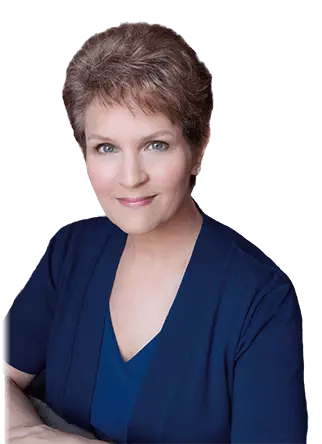What would you say is the most critical success factor for business growth in your company? If you’re like 91% of the respondents in a recent study of CEOs in North America, Europe, and Asia, you would say “developing leaders.” In this article, we’ll explore why leadership development has become more vital to business success than ever, and why companies are now overwhelmingly choosing a previously-untapped resource — Executive Coaching — as a key part of the solution.
Executive Coaching On the Rise
In a Fortune 500 survey, 43% of CEOs and 71% of senior executive team members said that they have worked with a coach, 63% of companies said they plan to increase their use of coaching over the next five years, and 92% of leaders who have used a coach in the past plan to do so again.
Why? The statistics indicate a clear answer: Coaching works. In a study of 370 participants who had worked with executive coaches, the group went from the 50th percentile in performance to the 93rd percentile. Amoco Corp./BP evaluated the impact of executive coaching over a ten-year period and discovered that managers who were coached received 50% higher average salary increases because their performance was so much better.
So, what does this mean for you and your company? It means that coaching is a powerful option when you need to transform managers into leaders who can handle today’s ever-changing world. Executive Coaching allows you to dramatically improve your leadership bench strength.
But why turn to an outside source for developing leaders? A brief history of business over the last three decades may shed some light.
Leadership Skills — Yesterday and Today
In the 1970s and 1980s, corporations used a pyramid structure with the CEO at the top. Most executives had three or four direct reports and could therefore spend quality time providing on-the-job training for them. If you had solid functional skills during that era — marketing, finance, and sales, for example — that was all you needed to win as a leader. Termed “hard” skills, these were considered most important, while “soft” skills like team management and communication were deemed of lesser value, if not altogether dispensable.
Then the 1990s arrived. Wall Street became tougher on companies, demanding better and better results. Most markets had tapped out domestically and started to look internationally. All of this brought about a surge of mergers and acquisitions resulting in larger and larger organizations. These huge conglomerates, too big to use pyramid structures, turned to flattened matrix organizations. The result? Managers suddenly had 8-12 direct reports, less time to train each individual, and they also found themselves with different bosses in different locations for different functions. The complexity of doing business had increased dramatically.
Other critical changes took place at the same time, intensifying the pace and challenges related to change:
- More and more women entered the workforce, resulting in more diversity in the workplace.
- People were living longer so, for the first time in the history of modern capitalism, four generations were working under the same roof.
- The rapid changes taking place in technology meant that the “work week” had become 24/7 for many organizations.
- Working across hemispheres created the need to manage time zones and cultural diversity, upping the importance of strong people skills.
Dramatic Changes in Such a Short Period — The Outcomes?
In this environment, functional skills have now become the price of entry. Previously considered “soft” skills are now in reality the “hard” skills that are vital to becoming a successful leader. Universities and MBA programs rarely teach those skills, and the flattened organizations of today allow little or no time for the busy leader to receive direct on-the-job coaching.
As a result, employee loyalty has dropped dramatically, bringing the average tenure in a given job to three years. Employers find it increasingly difficult to retain their best employees. The pace of change and increased scrutiny — including new regulations from government — is relentless. Last — but not least — as baby boomers (the largest group of people ever in the workforce) begin to reach retirement age, companies are starting to realize an even greater shortage of good leaders for the future.
The result of all of this means many companies and HR departments are turning to outside executive coaches to develop and strengthen their leaders.
What is Executive Coaching Anyway?
There is a myth about executive coaching that it’s about “fixing” behavior problems. Nothing could be further from the truth! Coaching isn’t consulting, counseling, or therapy. It isn’t about regretting a past that can’t be changed. It’s about focusing on a future that can be changed.
An executive coach is a skilled professional who develops an ongoing relationship with the leader-client and focuses on helping that individual to take action toward bringing to life stated goals. A coach serves as a combination of a mentor, manager, personal trainer, and sports coach. A good coach doesn’t provide solutions to the client. Instead, the coach draws out solutions from the client. This helps already successful leaders achieve positive, lasting changes in behaviors that allow them to transform themselves and their teams, ultimately leading to better overall business results.
How Can an Executive Coach Help?
A recent survey revealed the top two reasons that companies engage executive coaches:
- 48% said they used a coach to develop high potential employees or facilitate a successful transition into a new position.
- 26% said leaders used a coach as a sounding board. So, what exactly can an executive coach help today’s leaders accomplish? The list is long, but here are just a few examples:
- Stronger leadership skills/core competencies.
- On-board managers into a new company or position.
- Improve time management and work/life balance.
- Reduce and better manage stress.
- Develop more productive work relationships.
- Develop conflict management skills.
- Implement a new strategy, vision, or direction.
- Build an existing business or launch a new one.
What to Look For in an Executive Coach
It’s one thing to know that an executive coach can be an asset in developing leaders within your organization. It’s another thing to know how to choose a good coach. Make sure the coaches you consider are…
- Well-trained. Ask to see training certificates from an accredited coaching school.
- Certified by the International Coach Federation (ICF). See www.CoachFederation.org.
- Trained or certified in assessments like MBTI, StrengthsFinder, FIRO-B, LPI, EQI, CPI.
- Versed and experienced in both business operations and human/organizational behavior.
- Non-biased, non-judgmental, 100% focused on the client.
- Able to maintain 100% confidentiality.
- Open to allowing you to speak to past clients. At a minimum, you should read past client testimonials.
How Do You Know if a Coach is Right For a Specific Leader?
Good chemistry is key to success with an executive coach. A coach may have stellar credentials but may not be the right “fit” for the leader in question. So, request a free trial session when you have narrowed down your list of potential coaches. Then, don’t be afraid to ask some tough questions:
- What types of people and issues have you worked with, and what were the outcomes?
- What is your coaching model and process?
- Is there any client you would turn down?
- How do you deal with resistance?
- How would you define the difference between therapy and coaching?
- What is your greatest strength as a coach?
- What is your plan for keeping key stakeholders in the loop?
Cost and Payout?
What does executive coaching cost? The range is wide depending upon the coach’s level of experience and track record. Harvard Business Review has reported that rates range from $300-$3,500 USD per hour. One thing you can do to keep costs down is ask for a volume discount if your company has multiple managers who need coaching.
Make sure you get a good return on your investment (ROI) when it comes to Executive Coaching. Two recent large-scale independent studies amongst thousands of executive coaching clients across the world said the return on their investment was anywhere from 600-700% of the cost of the initial investment. Nonetheless, take the time to quantify the results of hiring an executive coach. The costs of weak leaders in today’s marketplace are great, but the benefits of having strong leaders are priceless.

WOULD YOU WANT TO WORK FOR YOU™®?
Discover how to build an executive leadership brand that inspires loyalty and drives employee performance.
As a senior leader wanting to release your team’s productivity and advance to the top echelons of your industry, it’s vital to start by looking inward.

 Brenda Bence is sought after across six continents as a Certified Executive Leadership Coach, internationally recognized branding expert, and the author of 11 award-winning books on leadership, coaching, and branding. A Global Certified Speaking Professional, Brenda is in demand as a top-rated motivational speaker, engaging audiences around the world, both in-person and virtually.
Brenda Bence is sought after across six continents as a Certified Executive Leadership Coach, internationally recognized branding expert, and the author of 11 award-winning books on leadership, coaching, and branding. A Global Certified Speaking Professional, Brenda is in demand as a top-rated motivational speaker, engaging audiences around the world, both in-person and virtually.